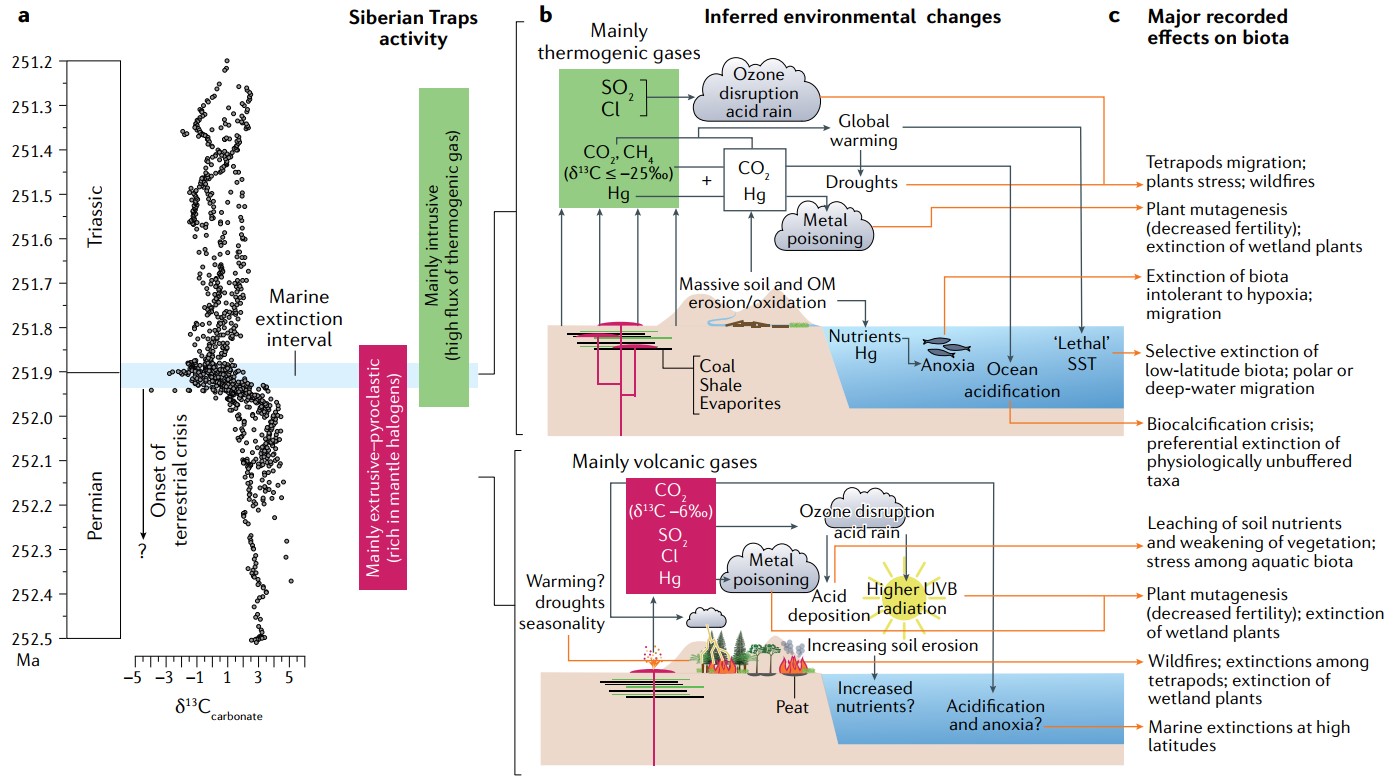Recently, the international research team led by Professor Jacopo DAL Corso, Professor Song Haijun from our laboratory and Professor Paul Wignall from the University of Leeds, UK were invited to publish a review article entitled "Environmental crises at the Permian – Triassic mass extension" on the Nature Reviews Earth & environment, in which the process and environmental driving mechanism of marine and terrestrial extinction at the turn between Permian and Triassic are systematically elaborated. This research was co-funded by National Natural Science Foundation (China), Natural Environment Research Council (the UK), Norwegian Council for Scientific Research and German Science Foundation.
The link between the Permian–Triassic mass extinction (252 million years ago) and the emplacement of the Siberian Traps Large Igneous Province (STLIP) was first proposed in the 1990s. However, the complex cascade of volcanically driven environmental and biological events that led to the largest known extinction remains challenging to reconstruct. In this Review, we critically evaluate the geological evidence and discuss the current hypotheses surrounding the kill mechanisms of the Permian–Triassic mass extinction. The initial extrusive and pyroclastic phase of STLIP volcanism was coeval with a widespread crisis of terrestrial biota and increased stress on marine animal species at high northern latitudes. The terrestrial ecological disturbance probably started 60–370 thousand years before that in the ocean, indicating different response times of terrestrial and marine ecosystems to the Siberian Traps eruptions, and was related to increased seasonality, ozone depletion and acid rain, the effects of which could have lasted more than 1 million years. The mainly intrusive STLIP phase that followed is linked with the final collapse of terrestrial ecosystems and the rapid (around 60 thousand years) extinction of 81–94% of marine species, potentially related to a combination of global warming, anoxia and ocean acidification. Nevertheless, the ultimate reasons for the exceptional severity of the Permian–Triassic mass extinction remain debated. Improved geochronology (especially of terrestrial records and STLIP products), tighter ecological constraints and higher-resolution Earth system modelling are needed to resolve the causal relations between volcanism, environmental perturbations and the patterns of ecosystem collapse.

Extinction mechanisms
Title: Environmental crises at the Permian–Triassic mass extinction
Authors: Jacopo Dal Corso*, Haijun Song*, Sara Callegaro, Daoliang Chu, Yadong Sun, Jason Hilton, Stephen E. Grasby, Michael M. Joachimski, and Paul B. Wignall*
Journal: Nature Reviews Earth & Environment
Link to the paper: https://www.nature.com/articles/s43017-021-00259-4